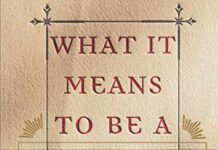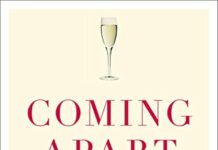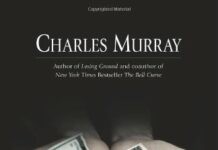
Ebook Info
- Published: 2004
- Number of pages: 688 pages
- Format: PDF
- File Size: 11.65 MB
- Authors: Charles Murray
Description
A sweeping cultural survey reminiscent of Barzun’s From Dawn to Decadence.”At irregular times and in scattered settings, human beings have achieved great things. Human Accomplishment is about those great things, falling in the domains known as the arts and sciences, and the people who did them.’ So begins Charles Murray’s unique account of human excellence, from the age of Homer to our own time. Employing techniques that historians have developed over the last century but that have rarely been applied to books written for the general public, Murray compiles inventories of the people who have been essential to the stories of literature, music, art, philosophy, and the sciences—a total of 4,002 men and women from around the world, ranked according to their eminence.The heart of Human Accomplishment is a series of enthralling descriptive chapters: on the giants in the arts and what sets them apart from the merely great; on the differences between great achievement in the arts and in the sciences; on the meta-inventions, 14 crucial leaps in human capacity to create great art and science; and on the patterns and trajectories of accomplishment across time and geography. Straightforwardly and undogmatically, Charles Murray takes on some controversial questions. Why has accomplishment been so concentrated in Europe? Among men? Since 1400? He presents evidence that the rate of great accomplishment has been declining in the last century, asks what it means, and offers a rich framework for thinking about the conditions under which the human spirit has expressed itself most gloriously. Eye-opening and humbling, Human Accomplishment is a fascinating work that describes what humans at their best can achieve, provides tools for exploring its wellsprings, and celebrates the continuing common quest of humans everywhere to discover truths, create beauty, and apprehend the good.
User’s Reviews
Editorial Reviews: Review “Murray’s overview…is engaging, user-friendly….[readers] are sure to enjoy his arguments and elegant presentation.” — Kirkus Reviews About the Author Charles Murray is the W. H. Brady Scholar in Culture and Freedom at the American Enterprise Institute for Public Policy Research in Washington, D.C. He is the author of seven other books, including Losing Ground and The Bell Curve, with Richard J. Herrnstein.
Reviews from Amazon users which were colected at the time this book was published on the website:
⭐The superiority of Western Culture and what makes it superior. Man oh man this is the hottest topic since race and intelligence was covered in the Bell Curve. So controversial, so juicy. Something nobody else has the balls to realistically cover. Where’s my fork and knife- I’m ready to dig in.Then I read the book. WTF? Seriously man? In this book Charles Murray is just a shadow of his former self. Is he too scared to be controversial anymore? He spends a lot of time defending himself in absurd detail, which in reality is boring and uninteresting reading. Such justifications should be put into a foot note or in an index at the end, maybe in a final chapter. The first few chapters start out pretty good. In them Murray muses about Western history and the Roman empire, the Greeks etc. Good reading, but not really diving into the juicy stuff. So I’m getting giddy. It’s gonna get good any moment. It just got worse. Murray decided to not touch anything other than significant figures in art and science. He spends most of the book justifying his methods and reasoning. Yes you can objectively measure excellence. Here let me devote most of a chapter explaining how. In trying to justify himself to the PC police he really made a book that isn’t interesting to his ideological supporters nor to the PC people. He ignores all kinds of really juicy topics, including a lot I probably haven’t thought of, but just off the top of my head the world uses Western mathematics (yes it has its origins in the middle east, but was refined by the Greeks). This is obviously a superior system. The world uses it because it is the most effective ways to build buildings and run banks. One could argue the entire world has significantly adapted Western mathematics, philosophy, legal structures, government structures, thought patterns, values etc. because they are effective. Murray doesn’t feel any of this is worth exploring. The social sciences are too hard to turn into data tables. Umm ok murray can you just write about them instead of turning them into a statistical bell curve or whatever other curve you found? Apparently not.Umm ok I guess we are going to skip over a lot of hot topics, but surely you must have some really juicy stuff related to significant figures in science and art. This is when Murray goes on and on about figures that most people never heard of or don’t care about. He regurgitates some stuff from the bell curve in regards to, well, bell curves. He never really hits anything interesting, just stating the obvious and then trying to justify his “controversial point”. He breaks it down into absurd and boring detail with numerous charts on where significant people were born. I guess kind of interesting, but without anything else substantial- a snooze fest. And what is his point? Most scientists and artists were born in West Europe. Free societies lead to more innovation and monoarchys can even be relatively free regarding tolerance of deviant ideas and innovation. A few nods to Christianity helping Western development but not a lot of deep elaboration. And look I just summarized hundreds of pages and countless charts in less than a paragraph. Seriously, why couldn’t the author do that? He has a talent at making things boring which can only be refined by a college professor. He seems almost afraid to really state anything too controversial and feels the need to explain himself repeatedly so we don’t mistake him for a quack or racist. Look the white hating left wing zealots are going to call you a racist no matter what so why even bother boring the rest of us with endless paragraphs about the obvious?Murray the first thing you need to ask yourself as an author is who your audience is going to be? Are you writing this for fans of the Bell Curve or are you trying to justify yourself to the PC police? Murray never really seems to decide, trying to pander to both in a really unremarkable way. Pick one or the other and it would be a better book with a more coherent thesis.And the thing is Murray is rich. He knows all kinds of well educated and connected people. He has the resources and fame to write this book that most people don’t have. And yet he really let us down. Maybe he would do better with a good co-author. I really feel this book needs some heavy editing and a version 2 or v. 3 released or something of that nature. The grammar is precise. The author is sharp and witty. The charts are accurate. But a good book goes beyond that- it must be interesting to read and therein it falls short. The basic topic is great, just the execution was ho hum, leaving most people saying “so what?” I mean whoopdy doo most scientists and artists come from Europe. That’s all you have to say? And do we need a thousand charts to hammer in the point, along with endless rants about how this is legitimate science? Listen Murray, when you say that most great historical figures were born in Europe we believe you. You don’t need to justify yourself in absurd detail. Now get into some far more insightful and controversial topics on Western culture will you.The other thing is that he seems excessively focused on art like some kind of rich snob. He sneers at the Romans for not really placing a high value on artists and not being as innovative as the Greeks in art. The fact that the Romans conquered the known world is of little consequence to Murray. He doesn’t seem to care about Western culture’s ability to put food on the table or to win wars, but rather with the art they produce and of course scientific innovation. He rambles on about things that only he cares about and tries to explain statistics for the “rest of us” as they did in the Bell Curve. But unlike the Bell Curve, most of that information seems irrelevant. We don’t need a lot of charts and mathematical models to analyze Western culture. It seems artificial, like a vague attempt to recreate the Bell Curve and somehow bask in its glory once again, without really saying anything as new or interesting.I like the book, I really do. I thought the first few chapters were great. I feel the topic is top tier. The author perfectly suited for this task. Yet in the end the whole thing just disappoints. I would really hope that at some point Murray could show the humility to pass this book onto some “hungry” younger protégés who can significantly edit it and add some more meaty insights and arguments. And please cut down on the boring and redundant information and justifications and place them in a separate chapter or category so I can actually read the book without falling asleep. I guess we get a free taste of college life here if you want to be bored to death by uninteresting facts. But I’ll leave this on a positive note: ok book, good concept, needs to be revisted.
⭐Charles Murray is a gutsy social scientist. Back in 1994, he co-wrote the excellent
⭐with Richard Herrnstein. The onslaught of controversy from the politically correct faction exhausted Herrnstein (he died not long after the release of the book). But, Murray kept on trucking and a decade later released another politically incorrect outstanding bombshell with this book.Being aware of the topic’s controversial nature, Murray spends nearly as much time explaining his statistical methodology as he does analyzing results. After reading Murray’s disclosure, you’re overwhelmed by his data gathering effort. And, you are hard pressed to think off how a researcher could have been more objective in this endeavor.From his extensive data, he develops a ranking of the top 20 contributors in tens of different fields. The usual suspects dominate the podium. In Western literature it is Shakespeare and Goethe. In Western Art, it is Michelangelo. In Physics, it is Newton and Einstein. In Western music it is the usual trio Beethoven, Mozart, and Bach. And so on and so forth.Murray makes a great effort in capturing non-Western culture by dedicating several inventories/rankings specifically for them, including numerous disciplines for the Arabic, Chinese, Japanese, and Indian cultures. His research methodology renders him as well versed in Japanese Art as Arabic Literature. His related analytical commentaries are fascinating and educative.Murray preempts politically correct concerns by addressing them head on. How about representation of women? As an abstract of his findings, if you are looking for the greatest composers of all time it is just impossible to come up with an alternative to the Mozart-Beethoven-Bach trio. And, the same is true for the other rankings he developed. He mentioned that in his gathered inventory of significant figures 98.5% are male. Speculating that all the well established sources had been heavily biased against women and had missed 50% of such significant figures; that would mean the percentage of male/female significant figures would be 97%/3% instead of 98.5%/1.5%. Murray does not believe the mentioned sources were biased. But, he adds even if they were it would not have made a material difference as stated above. Murray explicitly states men and women are of equal intelligence. It is just that our societies are patriarchal. Access to activities leading to superlative achievements is limited for women. Biologically, women incur the burden of reproduction and child rearing that is a constraint on the maniacal focus needed to become one of the all-time-greats in anything.How about representation of foreign cultures? As mentioned, Murray already dedicated numerous inventories/rankings to other cultures to give them more than their fair share of representation.After ranking individuals, Murray goes on to developing chronologies of major events in all the mentioned disciplines. Then, he moves on to analyzing trends in creativity over time and geographical location. You get that just a few places over short period of times generated an inordinate number of luminaries such as Athens during the Greek antiquity and a few Italian cities during the Renaissance.Murray is intrigued by this phenomenon. In chapters 15 and 16, he analyzes the factors contributing to generating many luminaries at any one time within a specific country. From his multivariate regression models we learn that the major contributing variables to generating such luminaries per country are: 1) # of political and financial centers; 2) # of cities with an elite university; 3) population of the largest city; 4) # of luminaries in the immediate preceding generation (defined as a 20 year span); and 5) GDP per capita. On page 380, he discloses the results of this model. And, it is surprisingly good. Using this model he estimated within + or – 10 the number of luminaries per country from 1400 to 1950. Less than 5% of the defined per country-period have an error greater than + or – 10 in the estimated number of luminaries.Next, Murray attempts to explain what the model has not. He extensively looks at the role of government with the expected assessment (totalitarian ones are bad as they don’t allow individual creativity). He also advances that the reason why Europeans dominate the rankings is because of religious considerations. Confucianism and Buddhism in Asia valued tradition, family, responsibility to community, and detachment from desire and individual aspiration. Murray feels Christianity allowed more room for individual achievements hence related human accomplishments thrived in Europe more than else where. Murray makes a case that Christianity fostered human accomplishments more than our modern secularism. This is because he feels religion gives a greater sense of life purpose than secularism. He extends his theory by explaining why he feels that the rate and quality of innovation in the arts and sciences has declined in the 20th century. Remember, he is not talking just about technology. He is questioning whether our civilization will ever produce music composers of the quality of a Beethoven, or painters comparable to Michelangelo, playwright matching Shakespeare, or even scientists matching Newton or Einstein (ok this last one is just on the cusp belonging in good part to the first half of the 20th century). Even though many would disagree, Murray makes a very interesting point. Do we really have another Michelangelo or Shakespeare to come?For a much different view of the interaction between science and religion, I also recommend Richard Dawkins’
⭐and Mike Shermer’s
⭐.
⭐A statistical look at the great artists and scientists of human history. If you know your history there isn’t too much to surprise in Murray’s findings but it is a well put together book, and very fairly considered.He finds (Spoilers!) that almost all the great scientists and artists of the world have been European. At one point he faces the figure of 97% being western. And he is extremely kind to Asian, Indian and Arab history throughout, inflating the role of these parts of the globe, which at times diminishes the whole point of his statistical method:It is something of a contradiction to have to include Confucious as the number one Asian eminent figure, scholars in Neo-Confuciansm close behind, Buddhist thinkers also in the list, and later explain how their thinking was a main reason for Asian society being restricted, lacking curiosity and inspiration, and producing few noteworthy talents.He also avoids/underplays the most obvious reason for western achievement for the majority of the book – which is Christianity. It is no coincidence that the places in which Christian culture bloomed with a sense of individual freedom and purpose – Renaissance Italy, and Protestant Northern Europe – are the exact places which contribute the vast majority of significant accomplishments.It’s a good book, and I applaud him for again going where he knows politically correct commentators don’t want to look. However, in trying to keep their cries of disquiet to a minimum and maintain the possibility of discussion he rather misses the major points of his work. Michelangelo is often mentioned, but never the subjects about which his great works were concerned; he was a great artist because of his ability but also because of what he painted and sculpted: the touch between God and man, the Biblical David, etc. So many of the scientists he mentions did what they did because they were exploring God’s laws. Greatness amongst human achievement is unequivocally linked to seeing the greatness of the Christian God, and living in a society that does, and Murray’s statistics attest to this throughout.
⭐But boring…
Keywords
Free Download Human Accomplishment: The Pursuit of Excellence in the Arts and Sciences, 800 B.C. to 1950 in PDF format
Human Accomplishment: The Pursuit of Excellence in the Arts and Sciences, 800 B.C. to 1950 PDF Free Download
Download Human Accomplishment: The Pursuit of Excellence in the Arts and Sciences, 800 B.C. to 1950 2004 PDF Free
Human Accomplishment: The Pursuit of Excellence in the Arts and Sciences, 800 B.C. to 1950 2004 PDF Free Download
Download Human Accomplishment: The Pursuit of Excellence in the Arts and Sciences, 800 B.C. to 1950 PDF
Free Download Ebook Human Accomplishment: The Pursuit of Excellence in the Arts and Sciences, 800 B.C. to 1950





